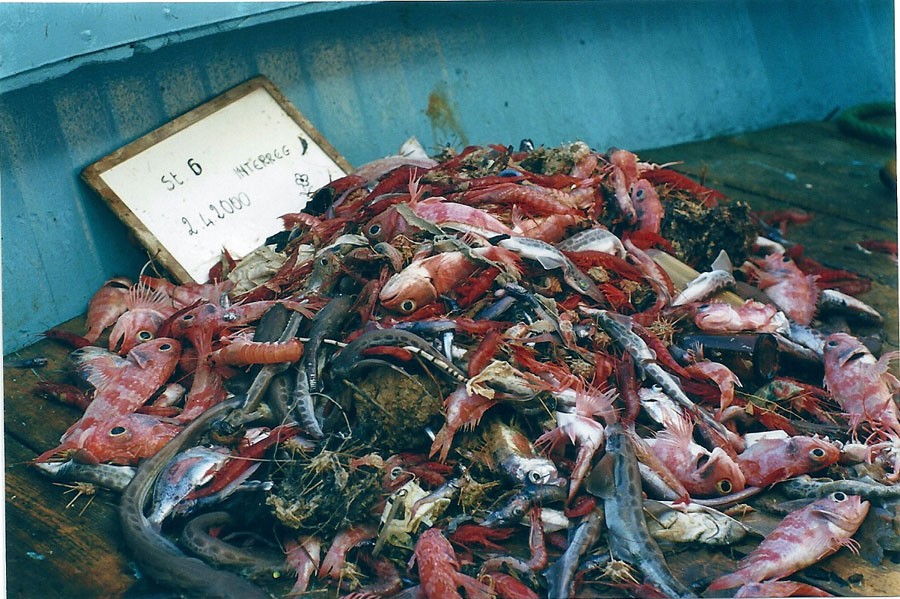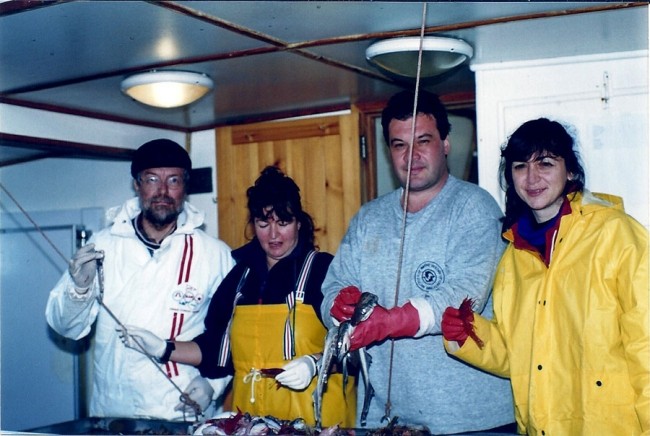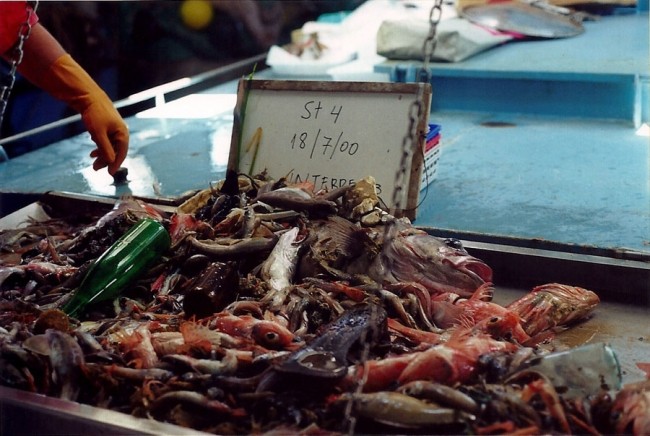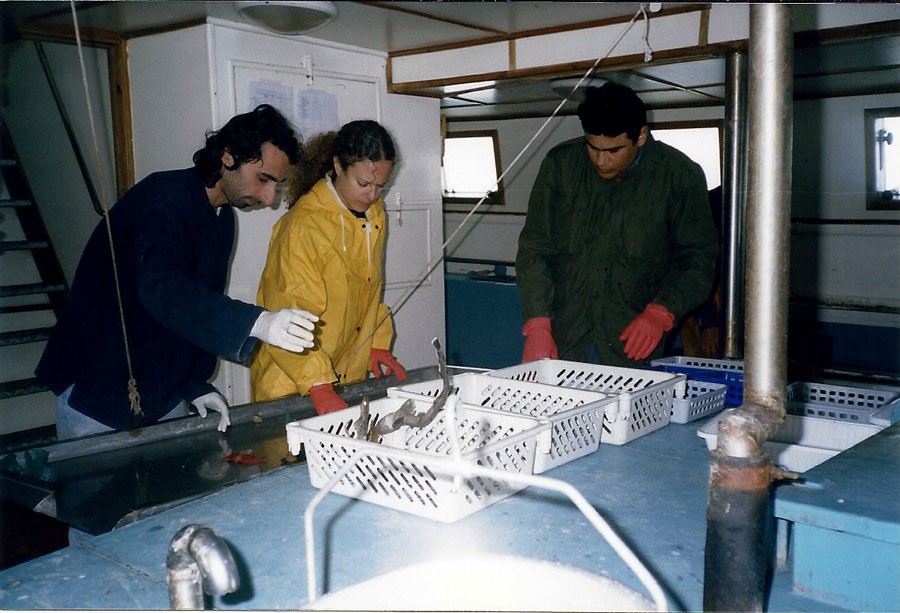The main objectives of this project were (a) to investigate the spatial distribution and abundance of important deep-water resources in the Ionian Sea, focusing on the red shrimps, A. foliacea & A.antennatus, (b) to collect useful information for the management of deep-water resources and particularly for the development of a sustainable Greek Deep-water Fishery, (c) to compare the results from the Greek to those of the Italian Ionian and (d) to transfer information and technologies to the local Authorities and fisher associations. Sampling was carried out in the northern Greek Ionian Ionian Sea (60 stations), from Othoni isl. to Zakynthos isl., and the north-western Italian Ionian (29 stations), between 300-1200 m of depth, from 1999 to 2000, using two commercial vessels, equipped with bottom trawl of 40 mm cod-end mesh size.
The most important results of this project (ANON., 2001a) are summarized as follows:
44 crustaceans, 101 fish and 25 cephalopods were identified in the deep waters of the Greek Ionian Sea; some of them mentioned as first records for the Greek waters or the Greek Ionian Sea (LEFKADITOU et al., 2003; MYTILINEOU et al., 2005; POLITOU et al., 2005). Two distinct faunal assemblages were identified, determined by depth at around 500m. The first one, in the upper slope, was characterized by the high abundance of many species and particularly of C. agassizi, whereas the second one in the middle slope characterized by the high abundance of the red shrimps (D’ONGHIA et al., 2003).
The total and commercial catch was higher in the depth zone 300-500 m than in deeper waters. Commercial fish catch was highest in the depth zone 300-500m, but commercial crustaceans presented highest value in the depth zone 500-700m (POLITOU et al., 2003). The red shrimps, A. foliacea and A.antennatus, were found in significant quantities in the whole Greek study area. Catch of A. foliacea was higher in the depth zone 500-700 m, ranging between 4-6 Kg/h; that of A. antennatus was higher in the depth zone 700-900m, ranging between 0.5-1.1 Kg/h (POLITOU et al., 2003). A. foliacea was more abundant in the Greek Ionian; A. antennatus in the Italian Ionian (ANON., 2001a, D’ONGHIA et al., 2003).
Smaller lengths were observed for some species (e.g. A. foliacea) in the Italian Ionian comparing to those from the Greek waters (Fig. 4); lower number of species and specimens of Chondrichthyans, absence of some species, all indicators of the impact of fisheries exploitation existing in the Italian waters (MYTILINEOU et al., 2001, D’ONGHIA et al., 2003). The examination of the bathymetrical distribution showed the bigger-deeper phenomenon for many species (MYTILINEOU et al., 2003a). Demographic (length composition, abundance), and biological information (maturity, spawning, sex ratio, feeding, age, growth, mortality) was studied for various species (KAPIRIS et al., 2001; 2002; 2005; KAPIRIS, 2004b; KAPIRIS & MYTILINEOU, 2004; MYTILINEOU et al., 2004; 2006b, c; D’ONGHIA et al., 2005; 2006). The estimated mortality rates for red shrimps in the Greek waters (Table 1) indicated the unexploited condition of the red shrimp stocks with similar values for total and natural mortality (D’ONGHIA et al., 2005; KAPIRIS et al., 2005). This unbiased estimation of natural mortality M is very important for the population dynamic studies of these species in all Mediterranean waters. In addition, the estimated L¥ for the red shrimps was very close to their larger observed sizes. All this information lead to the hypothesis that red shrimp stocks are in pristine condition.
One colony of the deep black coral Leiopathes glaberrima and many colonies of the bamboo coral Isidella elongata were identified in the Greek waters (VAFIDIS et al., 2006), species whose presence decreased in the Italian Ionian due to the trawl activity.
Recommendations according to the results of the project included the increase of the cod-end mesh size and the closure of trawling during the reproductive period and recruitment of the red shrimps; this is urgent for the Italian waters (D’ONGHIA et al., 2005; CARLUCCI et al., 2006). More studies should be carried out to protect areas of particular interest (e.g. corals, nursery and spawning grounds) (MYTILINEOU et al., 2006c). Since a Greek deep-water trawl fishery could be developed in the future, more detailed studies should be promoted to investigate the pristine Greek deep-water stocks (ANON., 2001a). [DG/XII-XIV/EU/ FAIR CT-98/4044]




